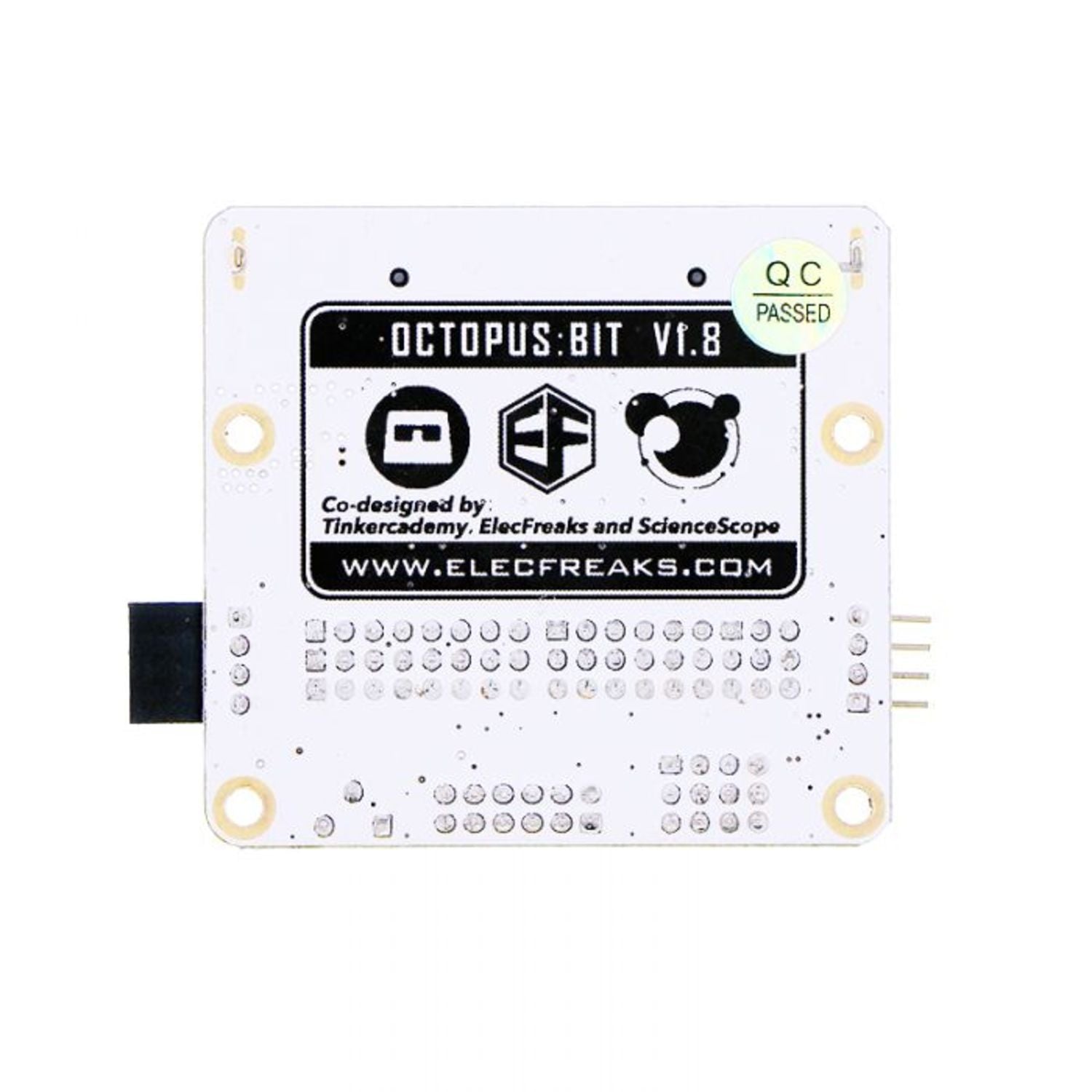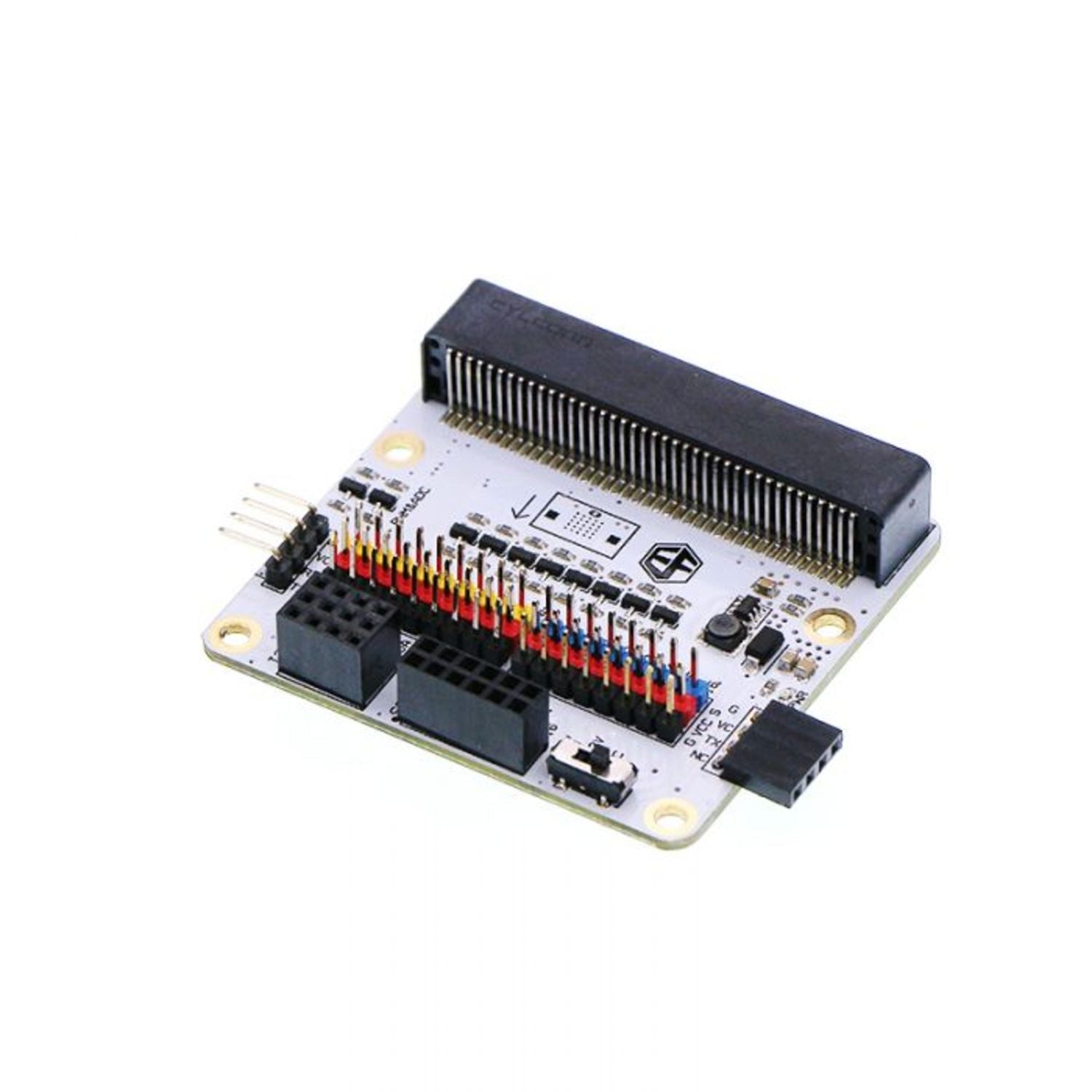The Micro:bit Octopus:bit Breakout Board is a great tool for expanding the capabilities of your Micro:bit. It has an input voltage of 3.3V and is powered by the edge connector of the Micro:bit. It extends all GPIO ports from P0 to P16 and P19 to P20. Beneath each I/O port, there are VCC and GND pins in different colors, making it easy to connect extension modules. The pin layout is fully compatible with Octopus series products. It comes with a voltage boosting module, allowing you to switch the working voltage of P8, P9, P11 to P16 between 3.3V and 5V via the voltage switch. It also leads out serial, I2C, and SPI ports. The I2C port can connect 3 channels of I2C devices, and the SPI port can connect 2 channels of SPI devices. You can even use it for direct serial port communication between two breakout boards. This board is suitable for programming education, smart device creation, and any situation that requires Micro:bit GPIO. It measures 15*10*2 cm and weighs 33.4g. Check out the Octopus:bit User Guide for more details.


Using the Micro:bit Octopus:bit Breakout Board is easy. First, connect it to your Micro:bit through the edge connector. Then, you can start connecting your extension modules to the GPIO ports. The colored VCC and GND pins will help you make the right connections. If you need to change the working voltage of certain ports, use the voltage switch. When using the serial, I2C, or SPI ports, make sure to follow the correct wiring rules. As for maintenance, keep the board clean and dry. Avoid exposing it to extreme temperatures or moisture. If you encounter any problems, refer to the Octopus:bit User Guide. Have fun creating with your breakout board!